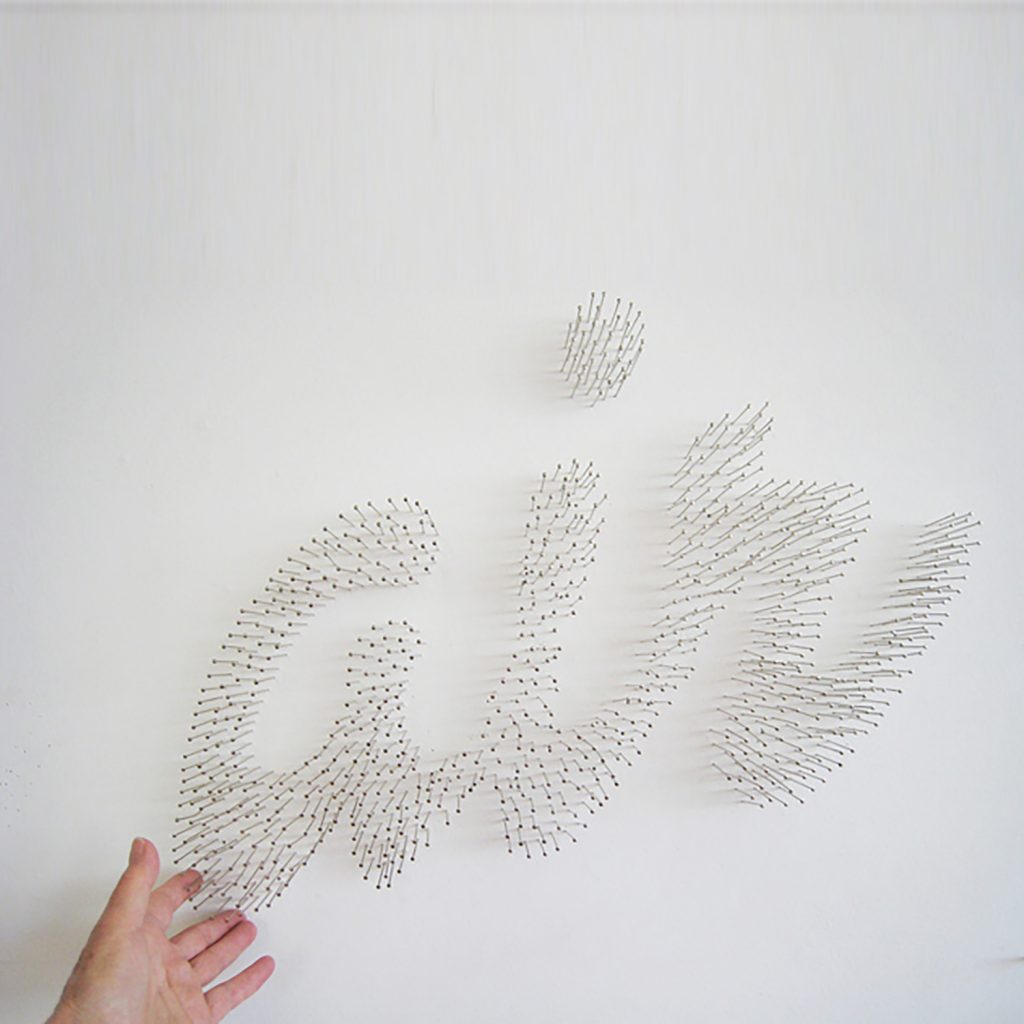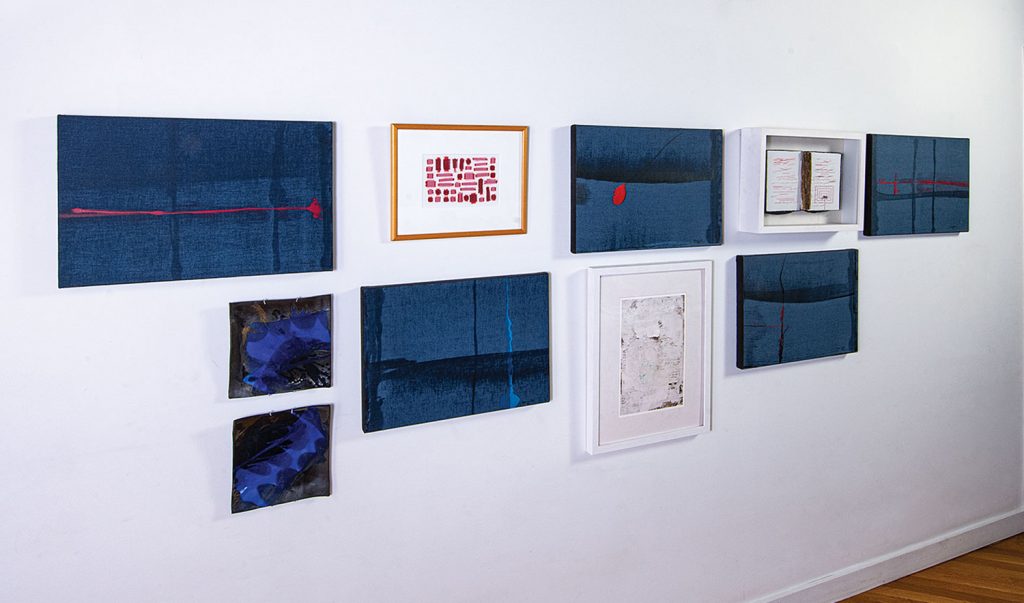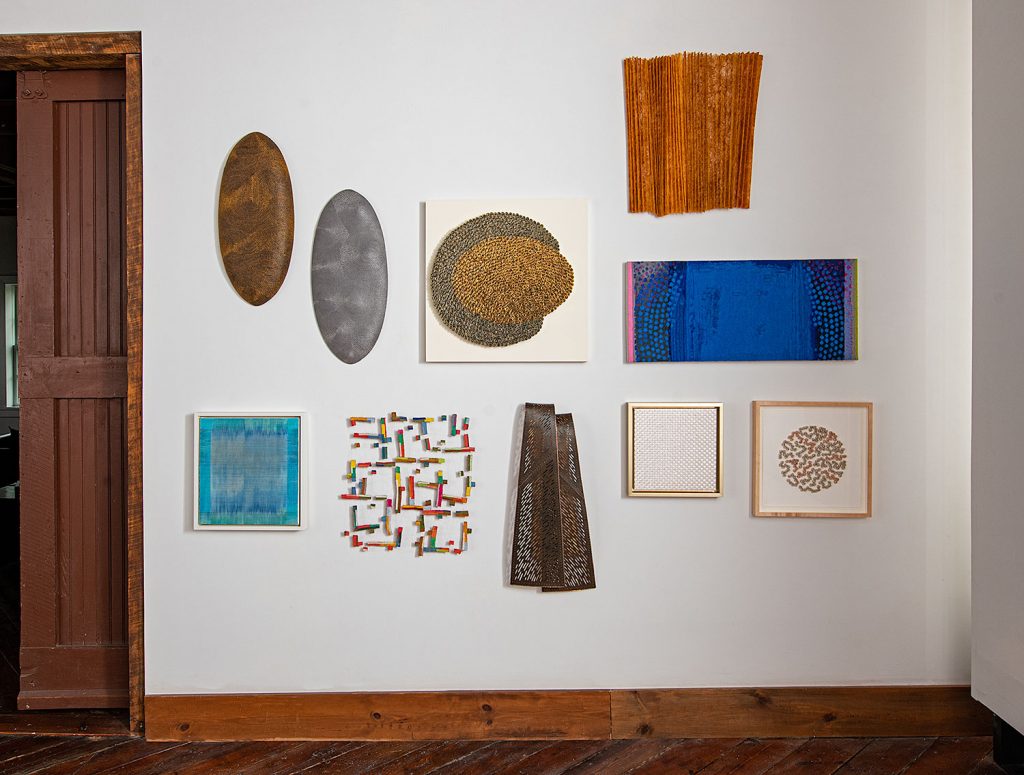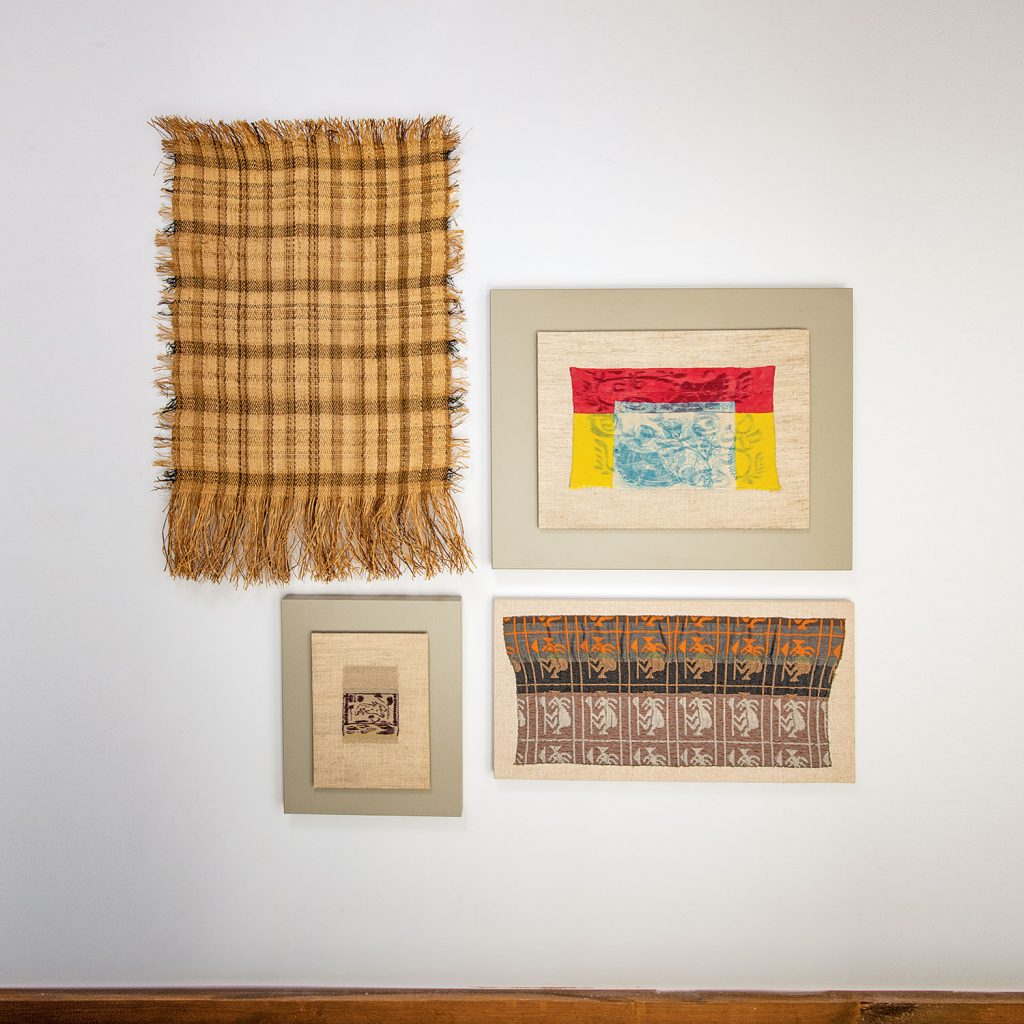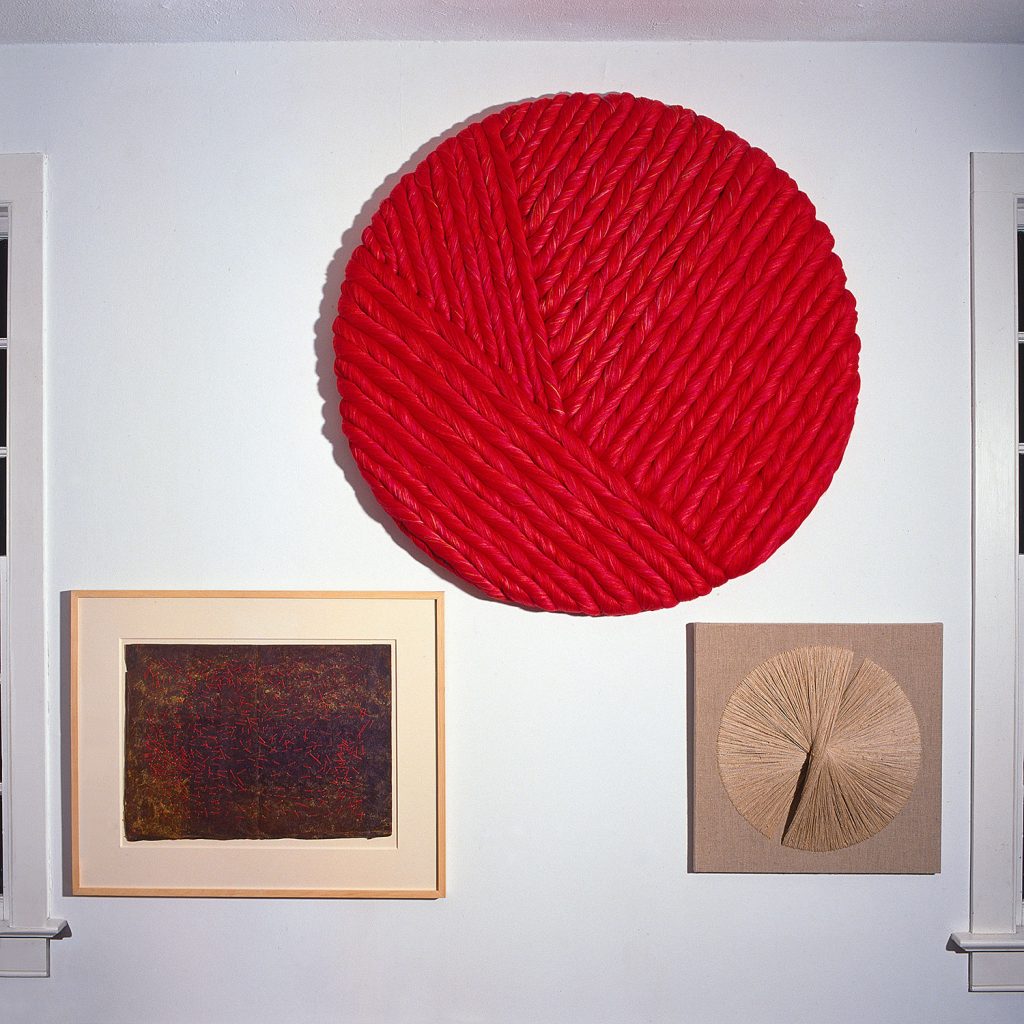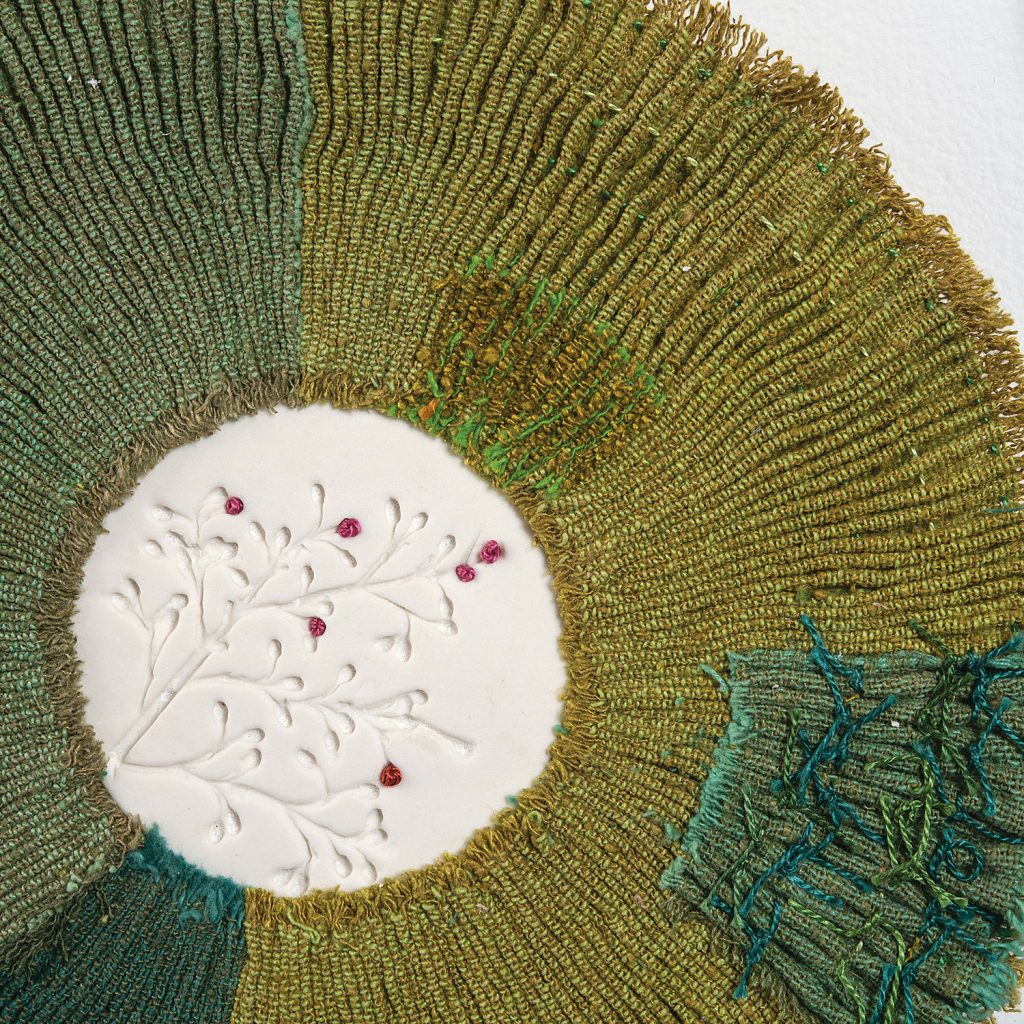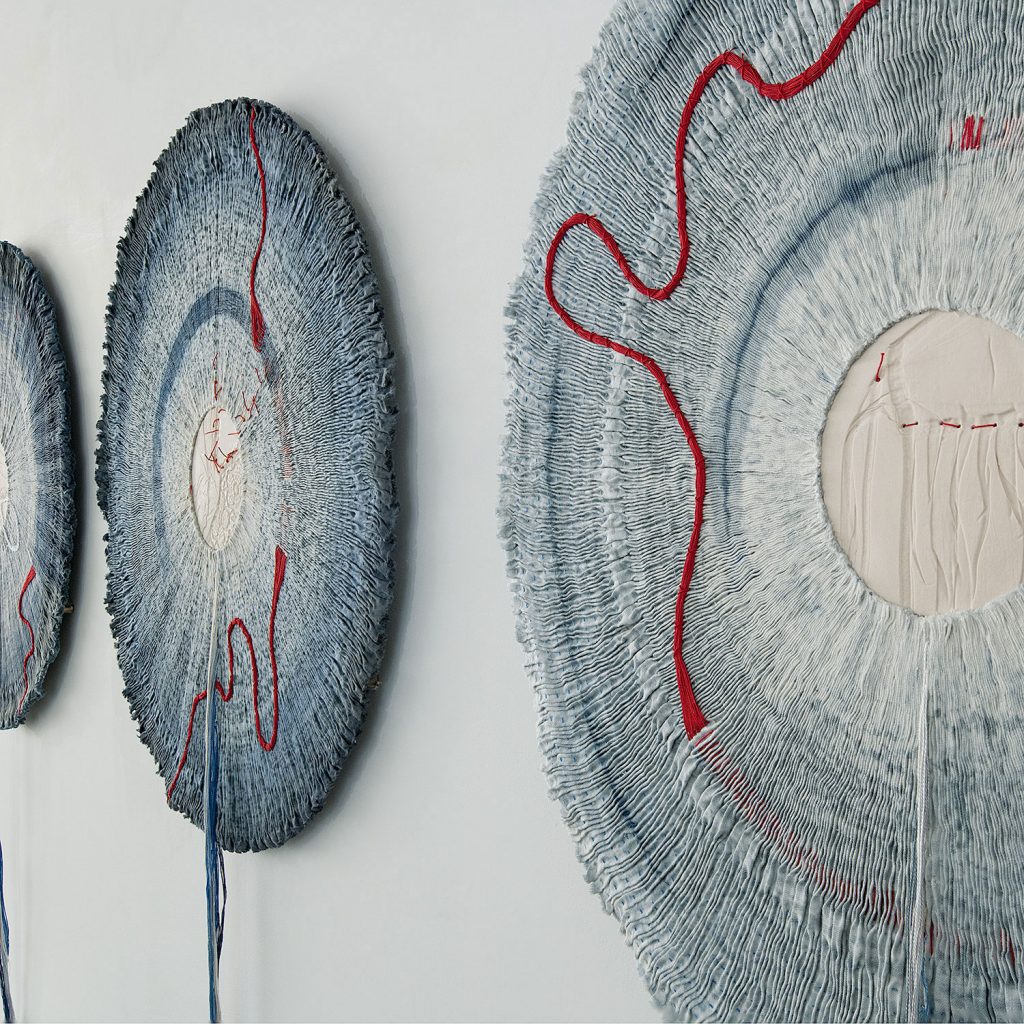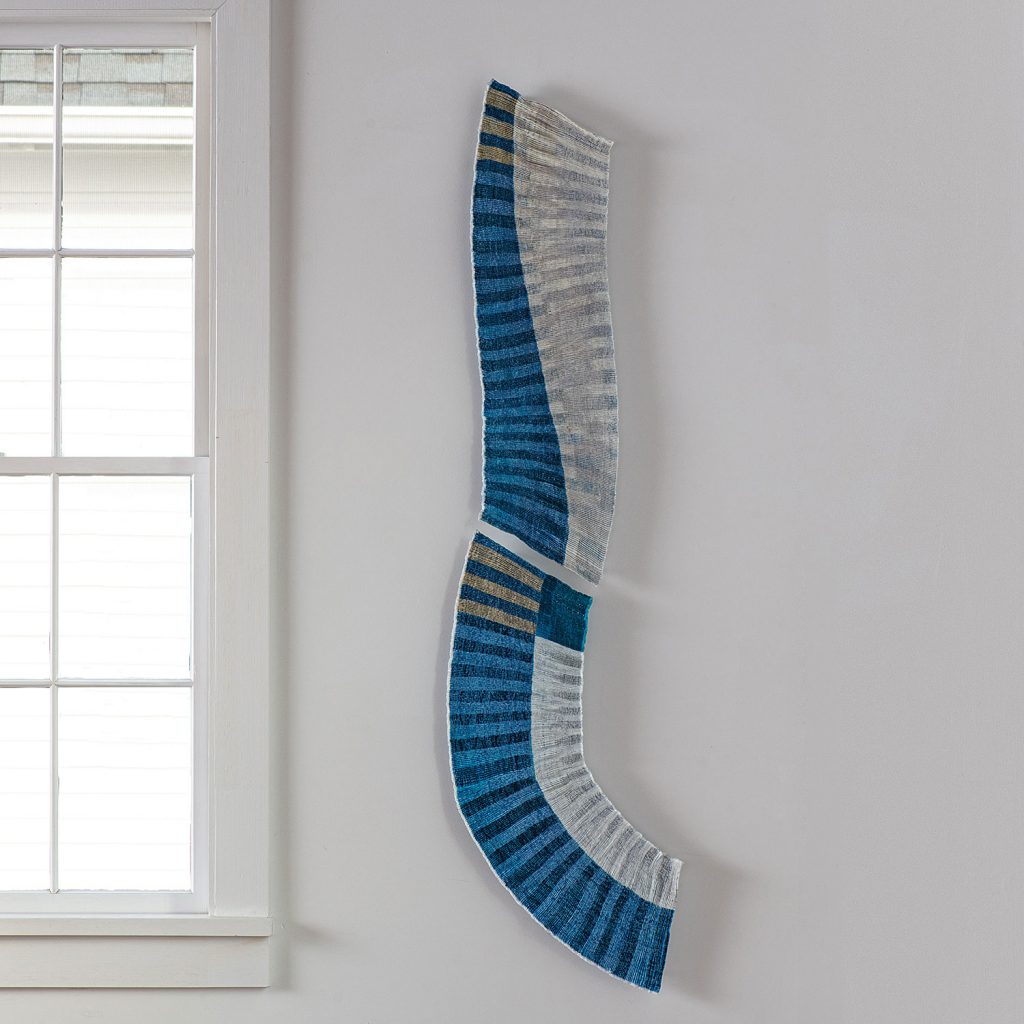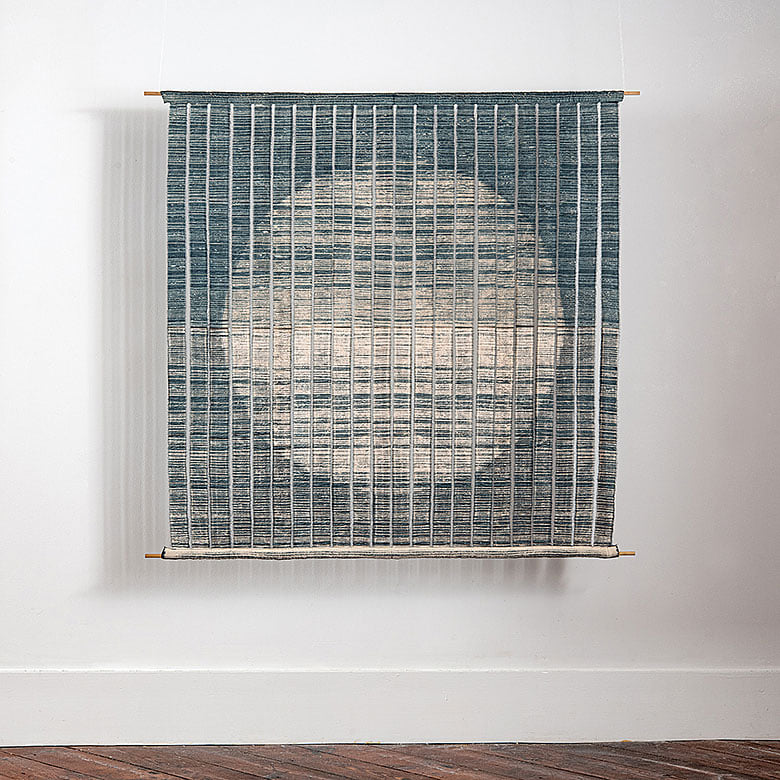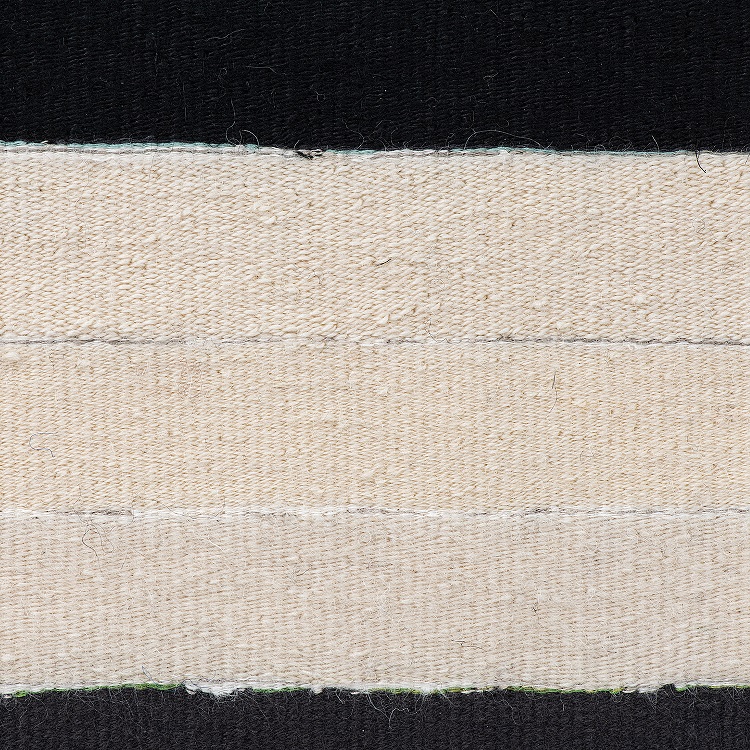Art is not created in a vacuum. Artists have a keen eye that they often cast on current culture. California artists James Bassler and Gyöngy Laky have both been influenced by Donald Trump’s disruptive impact on our political lives, an influence that they have expressed in their art.
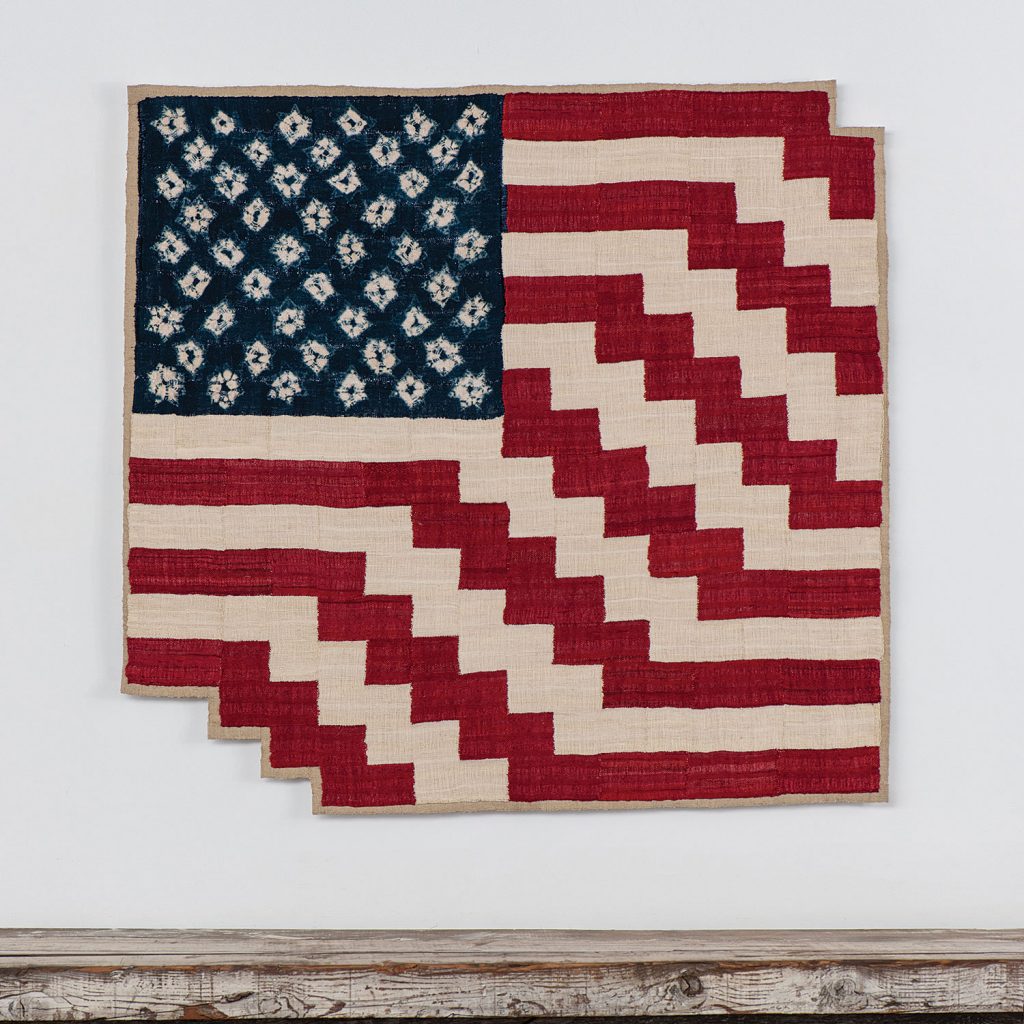
What’s Happening 2016
four-selvaged construction, with shibori star field; warp and weft are a mix of linen, silk, nettles, and cotton, with synthetic dyes. Photo by Tom Grotta.
In early 2016. James Bassler, was invited to participate in the 10th Shibori International Conference, to be held in Oaxaca, Mexico that November. Each entry was to utilize some resist-dyeing technique. “I chose to attempt a field of stars in the American flag,” Bassler writes. “I also chose to weave the flag using the pre-Columbian four-selvage construction. The process is slow, but allows for design changes as the weaving proceeds.” He began in the early months of 2016, coinciding with the political preparations of electing a new president. “Those events,” he recalls, “in particular the dominance of Donald Trump, began to affect my design decisions in making the flag. The red and white stripes in my weaving began to incorporate definite agitation, the same agitation I felt watching the presidential debates. The more extreme the rhetoric, the more extreme the stripes.” The flag was completed and sent off, first to LongHouse, East Hampton for a summer exhibition, then to Oaxaca, Mexico by mid-October. The work was returned from Mexico in March of 2017. In early Spring, it was selected to be in an exhibition in Portland, Oregon. There, “as a result of the presidential election,” Bassler says, “the instructions to the exhibition staff were to hang the flag upside down.”

Donald and His Hapsburg Empire 2016
wedge weave construction; indigo-dyed linen warp; linen, handspun silk from Mexico, spun duck feathers from Mexico, commercial silk weft. Photo by Tom Grotta.
The same exhibition in Oaxaca in January 2016 inspired Donald and his Habsburg Empire. In this piece, Bassler tried to capture both the historical and the contemporary attitude of arrogance and entitlement that has existed throughout history. Historically, the Habsburgs, the ruling family of Austria, 1276-1918 and of Spain,1516-1700, gave the world elitism through birthright, with no regard to proven achievement. “Today in the United States,” he says, “the Kardashian and the Donald Trump model has made the acquisition of vast sums of money and profit an alarming societal objective, an elitism that values profits over people.” The concept was to have contemporary artists explore the use of spun feathers, relating back to their usage in the 17th and 18th centuries. The invitation was accompanied by many visuals, including images of ceremonial textiles, from those distant centuries, housed in museums throughout the world. “In all honesty, it was a bit daunting to accept the invitation,” Bassler says. “As the only North American in the exhibition, what might I do? After reviewing all of the material, I couldn’t help but notice that on many of the ancient textiles the feathers were used to promote the double-headed eagle of the Habsburg Empire, a reminder to those subjugated as to who was in charge. With that in mind and the fact that the feathers came from Canadian ducks, it was a logical step to create the double-headed ducks. The Donald Trump arrogance factor developed as the presidential debates materialized,” he observes.
Donald Trump’s candidacy concerned Gyöngy Laky as a citizen and an artist. “When it became clear that Donald Trump was the Republican candidate” she remembers, “I cringed and told my husband I worried he could win the election and he did. I have been horrified by his demeanor, corruption and abuse of power.” She was particularly disturbed by his comment shortly before the Iowa caucus, when he bragged that he could commit a crime and it would not deter his supporters. “I could stand in the middle of Fifth Avenue and shoot somebody, and I wouldn’t lose any voters, OK?” he said. “It’s, like, incredible.” Laky’s best friend lived two blocks from Trump Tower on Fifth Avenue. “This man is joking about killing her or someone else,” she thought. The work that resulted was direct; with a wide-ranging message. “I knew I would have to make an art piece to address who he is… a racist, a sexist, a criminal, a liar, a tax cheat, an incessant golfer on our dime, a man who seems to enjoy making fun of and hurting people and destroying our institutions, someone who does not believe in science, someone who populates our government with incompetent people, someone who supports white supremacists… someone who said proudly that he could commit a crime killing a person without remorse or guilt nor suffering consequence.” The result was Fifth Avenue, 12/23/16 , made in 2019 out of an AK-T Tequila MX bottle, golf tees and a golf ball.

Fifth Avenue 1/23/16, 2019
AK-T Tequila MX bottle, golf tees and golf ball. Photo by Gyöngy Laky
Art can help us to understand how to proceed and inspire us to join the fray, observes Laky, quoting Congresswoman Alexandria Ocasio-Cortez, “You can’t be what you can’t see.” Laky also cites a sequel to last year’s Emmy-nominated short, A Message From the Future with Alexandria Ocasio-Cortez is a new film, Message From the Future II: The Years of Repair, both illustrated by Molly Crabapple, which urges us to look forward with hope. “In Message II, Opal Tometi, co-founder of Black Lives Matter, and Gael Garcia Bernal, Nnimmo Bassey and Emma Thompson, call upon us to be hopeful, be strong, be active and take part.”
Looking forward, “I’m counting on our younger ones, joined by my generation who remember the 1960s, to turn us around,” says Laky. “With the many difficulties we face fumbling and scrambling toward the possibly most consequential election of our lifetimes, we’re called upon to lift our spirits and gather our strength, awakening our activist souls.”



